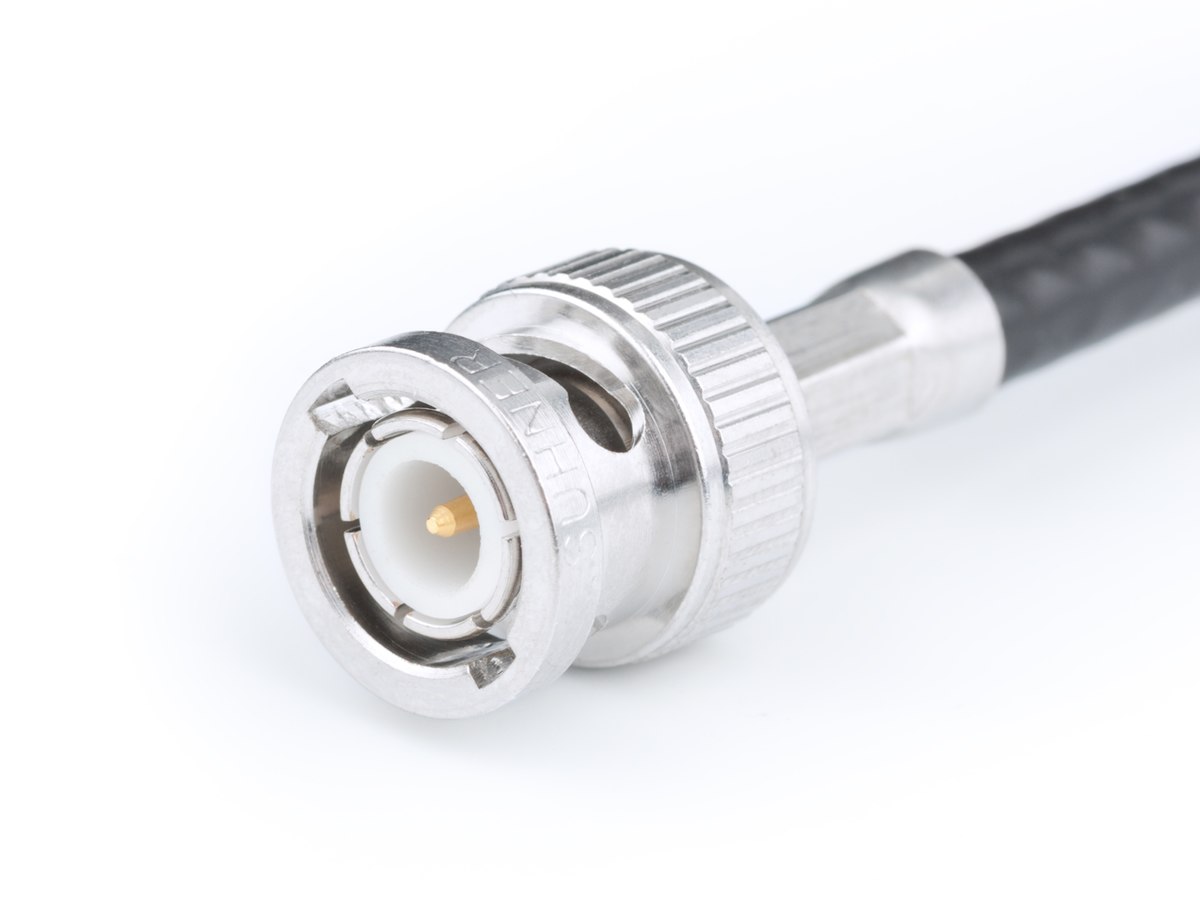The BNC (Bayonet Neill–Concelman) connector is a miniature quick connect/disconnect radio frequency connector used for coaxial cable. It features two bayonet lugs on the female connector; mating is fully achieved with a quarter turn of the coupling nut. BNC connectors are used with miniature-to-subminiature coaxial cable in radio, television, and other radio-frequency electronic equipment, test instruments, and video signals. The BNC was commonly used for early computer networks, including ARCnet, the IBM PC Network, and the 10BASE2 variant of Ethernet. BNC connectors are made to match the characteristic impedance of cable at either 50 ohms or 75 ohms. They are usually applied for frequencies below 4 GHz and voltages below 500 volts.

Similar connectors using the bayonet connection principle exist, and a threaded connector is also available. United States military standard MIL-PRF-39012 entitled Connectors, Coaxial, Radio Frequency, General Specification for (formerly MIL-C-39012) covers the general requirements and tests for radio frequency connectors used with flexible cables and certain other types of coaxial transmission lines in military, aerospace, and spaceflight applications.
The connector was named the BNC (for Bayonet Neill–Concelman) after its bayonet mount locking mechanism and its inventors, Paul Neill, and Carl Concelman. Neill worked at Bell Labs and also invented the N connector; Concelman worked at Amphenol and also invented the C connector. A backronym has been mistakenly applied to it: British Naval Connector. Another common incorrectly attributed origin is Berkeley Nucleonics Corporation.
The basis for the development of the BNC connector was largely the work of Octavio M. Salati, a graduate of the Moore School of Electrical Engineering of the University of Pennsylvania. In 1945, while working at Hazeltine Electronics Corporation, he filed a patent for a connector for coaxial cables that would minimize wave reflection/loss. The patent was granted in 1951.
